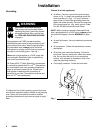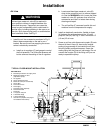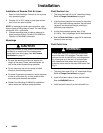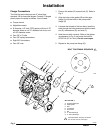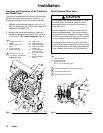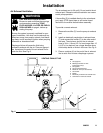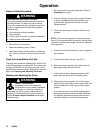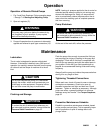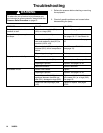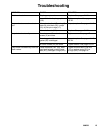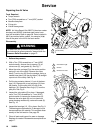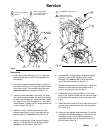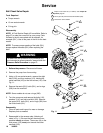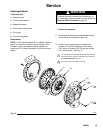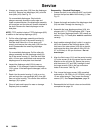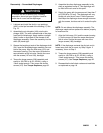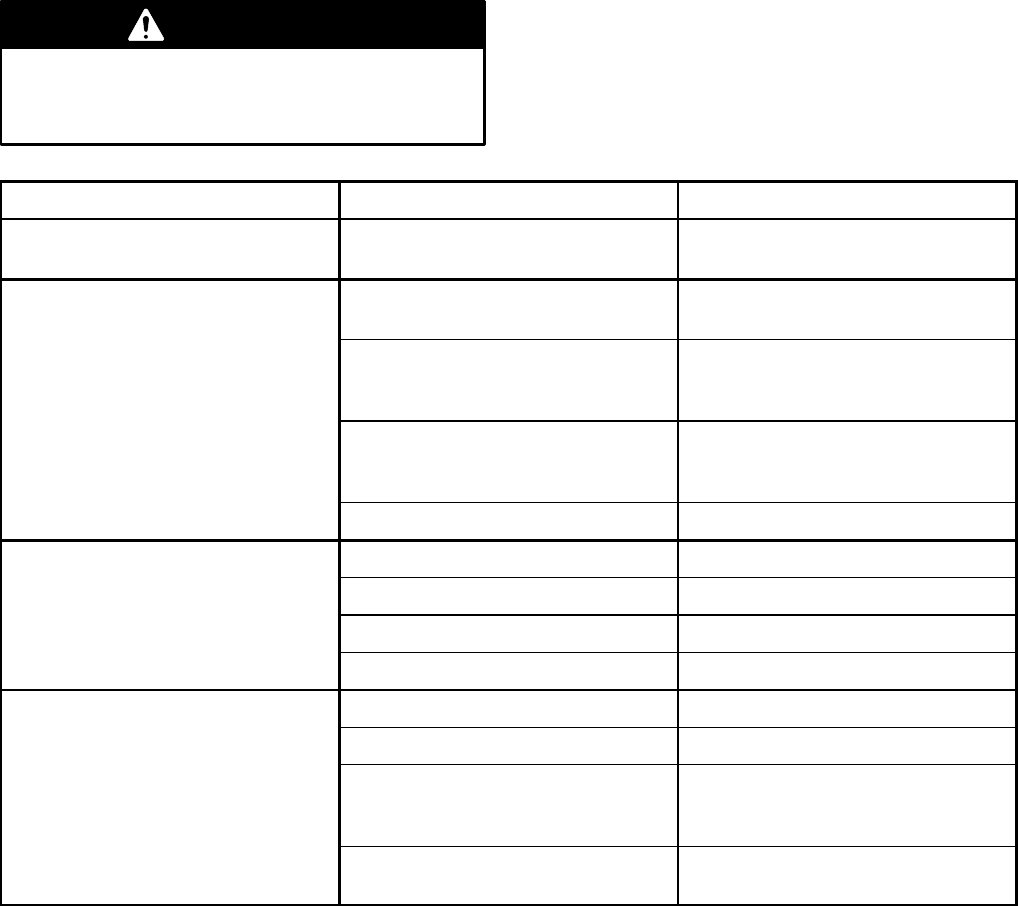
14 308550
Troubleshooting
WARNING
To reduce the risk of serious injury whenever you
are instructed to relieve pressure, always follow the
Pressure Relief Procedure on page 12.
1. Relieve the pressure before checking or servicing
the equipment.
2. Check all possible problems and causes before
disassembling the pump.
PROBLEM CAUSE SOLUTION
Pump cycles at stall or fails to hold
pressure at stall.
Worn check valve balls (301), seats
(201) or o-rings (202).
Replace. See page 18.
Pump will not cycle, or cycles once
and stops.
Air valve is stuck or dirty. Disassemble and clean air valve.
See pages 16–17. Use filtered air.
Check valve ball (301) severely
worn and wedged in seat (201) or
manifold (102 or 103).
Replace ball and seat. See page
18.
Check valve ball (301) is wedged
into seat (201), due to overpressur-
ization.
Install Pressure Relief Valve
(see page 10).
Dispensing valve clogged. Relieve pressure and clear valve.
Pump operates erratically. Clogged suction line. Inspect; clear.
Sticky or leaking balls (301). Clean or replace. See page 18.
Diaphragm ruptured. Replace. See pages 19–22.
Restricted exhaust. Remove restriction.
Air bubbles in fluid. Suction line is loose. Tighten.
Diaphragm ruptured. Replace. See pages 19–22.
Loose inlet manifold (102), dam-
aged seal between manifold and
seat (201), damaged o-rings (202).
Tighten manifold bolts (112) or re-
place seats (201) or o-rings (202).
See page 18.
Loose fluid side diaphragm plate
(105).
Tighten or replace. See pages
19–22.



